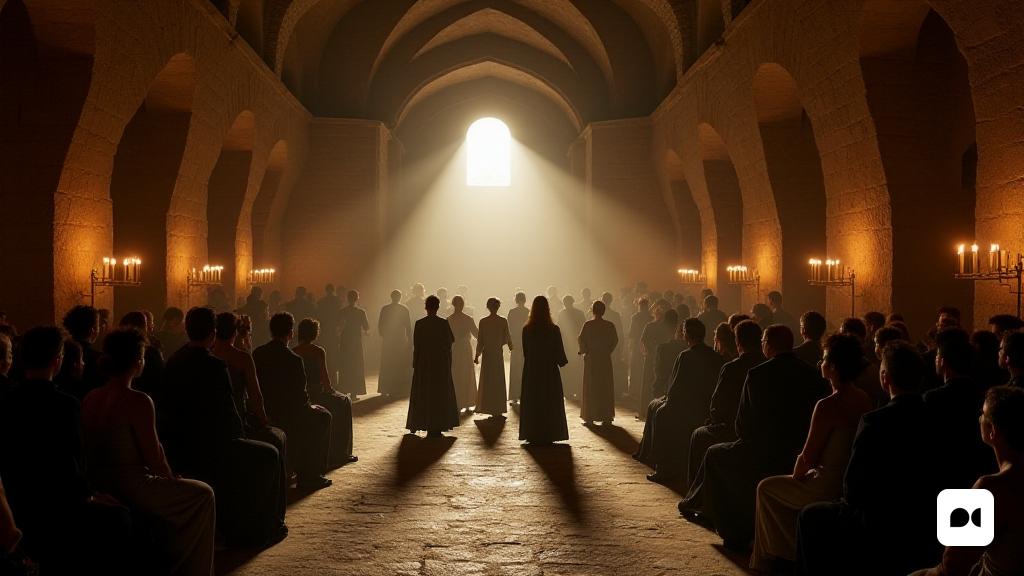A magical and melancholy atmosphere
The magic of the Nordic light, with its soft and quiet tone, has fascinated generations of artists and travelers. Unlike warm southern light, this lighting arises slowly, creating an atmosphere that invites introspection. As part of the Vox Clamantis concert, held on April 4 at the Monastery of Sant Pau del Camp, this light played a fundamental role, surrounding the attendees in an almost spiritual experience that transcended the simple perception.
Vox Clamantis: A Musical Trip between Times
Founded in 1996, Vox Clamantis has been a pioneer in the interaction between medieval music and contemporary compositions. His name, inspired by a Latin poem by John Gower, reflects his commitment to the musical tradition. In this concert, the choir, consisting of fourteen voices, performed a program that fused liturgical texts with Gregorian chant, and the innovative works of two of the most influential composers today: Henrik Ødegaard and Arvo Pärt.
Innovation and tradition in dialogue
Ødegaard, one of the great renewers of religious music, contributed an approach that connects Gregorian singing with the popular roots of Norway, using polyphonic techniques that reflect the duality between order and chaos. On the other hand, Arvo Pärt, with his roots in dodecafonic music, has captured the attention of a wide audience with his minimalist compositions, impregnated with deep spirituality.
An exceptional interpretation
Directed by Jaan-Iik Tulve, members of Vox Clamantis demonstrated an exceptional vocal technique, with an expressiveness that resonated with the soul of the works performed. His ability to adapt to the demands of the repertoire, which included complex harmonies and moments of solism, was impressive. Its stage disposition, far from the conventional, allowed the heart to interact with the acoustics of the monastery, creating a captivating sound effect.
A passionate reaction from the public
The concert was not only a sign of talent, but also an emotional experience that connected the attendees with the depth of choral music. The response from the audience, which filled the Romanesque monastery, was apotheosis, with a prolonged ovation that reflected the impact of this innovative artistic proposal.
Final reflections on choral music
Vox Clamantis’s proposal reminds us that choral music is a living art, capable of evolving and reinventing itself without forgetting its roots. With a contemporary sensitivity, this formation shows that tradition can coexist with innovation, creating a rich and dynamic dialogue that continues to captivate today’s audiences.

